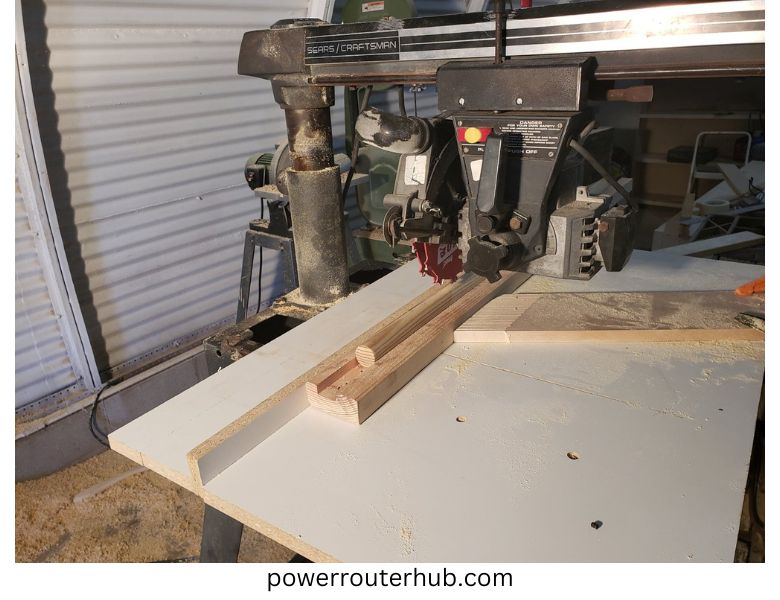Working with wood requires a certain level of precision, especially when cutting channels. Whether you are creating a decorative accent or a functional component, cutting channels in wood is a crucial step that requires careful preparation and execution. In this article, we will explore the process of cutting a channel in wood with a router, including the tools and materials you will need, and the steps to follow for a successful project. With the right preparation and techniques, cutting a channel in wood with a router can be a simple and enjoyable task. So, whether you are a seasoned woodworker or just starting out, this article will provide you with the information you need to get the job done.
Preparation:
Before you start cutting a channel in wood with a router, it’s important to properly prepare the wood piece and your workspace. Here are the key steps in preparation:
- Marking the cutting line: Use a straight edge or a square to mark the cutting line on the wood piece, making sure it is straight and even.
- Selecting the appropriate router bit: The type of router bit you need will depend on the size and shape of the channel you want to cut. Make sure to choose a bit with the correct diameter and cutting-edge profile for your project.
- Setting up the router: Once you have the correct bit installed, you will need to set up the router for the cutting process. This involves adjusting the depth of the cut and setting the starting and stopping points for the cut.
By taking the time to properly prepare your workspace and materials, you will ensure a smooth and successful cutting process. With these preparations in place, you are ready to move on to the next step and start cutting the channel in wood with your router.
See Also: Carving designs in wood with a router
Cutting the Channel:
Now that you have your materials and workspace prepared, it’s time to start cutting the channel in wood with your router. Here are the steps you will need to follow:
- Making the first pass: Start the router and make a slow, steady pass along the cutting line, following the markings you made in preparation.
- Adjusting the depth of cut: After the first pass, you may need to adjust the depth of cut on your router to create a deeper channel. Make sure to check the depth after each pass and adjust as needed.
- Making subsequent passes: Continue making passes with the router, adjusting the depth of cut as necessary, until you reach the desired depth of the channel.
- Finishing the cut: When the channel has reached the desired depth, stop the router and carefully remove it from the wood piece. The channel should now be complete.
By following these steps, you should now have a clean and precise channel cut in your wood piece. With proper techniques and preparation, cutting a channel in wood with a router can be a simple and effective process.
Cleaning up the Channel:
After cutting the channel in wood with your router, there may be some rough spots or rough edges that need to be smoothed out. Here’s how you can clean up the channel:
- Removing any rough spots: Use a chisel or a sanding block to remove any rough spots or rough edges in the channel. Take care to remove only the rough areas and avoid damaging the rest of the channel.
- Sanding the channel: Sand the entire channel with a fine-grit sandpaper to ensure a smooth and even finish. Start with a lower grit sandpaper, such as 120, and then progress to a higher grit, such as 220, for a smoother finish.
By taking these steps to clean up the channel, you will ensure a polished and professional-looking final product. With a little effort and attention to detail, you can create a channel in wood that is both functional and aesthetically pleasing.
Conclusion:
Cutting a channel in wood with a router is a relatively simple process that can add a level of detail and precision to your woodworking projects. By following the steps outlined in this article, you will be able to prepare your materials and workspace, make the cuts, and clean up the channel to create a finished product that you can be proud of.
To recap, the key steps in cutting a channel in wood with a router are: preparation, cutting the channel, and cleaning up the channel. With the right tools, materials, and techniques, you can achieve professional-looking results every time.
Finally, here are a few tips for a successful project:
- Take your time and be patient.
- Keep the router bit moving at a steady pace.
- Make sure to wear appropriate safety gear, such as eye protection and hearing protection.
Whether you are an experienced woodworker or just starting out, cutting a channel in wood with a router is a skill that is well worth learning. With the right preparation and techniques, you can create beautiful and functional channels in your wood pieces that will enhance any project.

